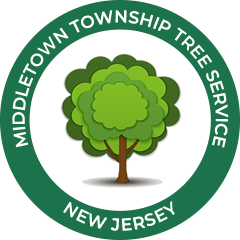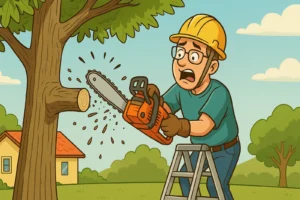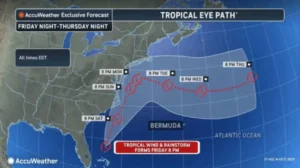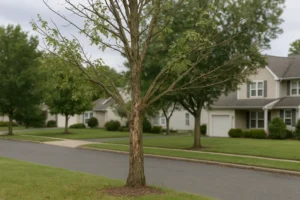Trees are a defining feature of Middletown Township

From the tall oaks lining Kings Highway to the graceful maples near Chapel Hill, our community’s trees provide shade, privacy, and curb appeal. But even the healthiest trees can develop problems that aren’t immediately obvious. A small crack, fungus growth, or thinning canopy might seem minor now but could signal deeper health or structural issues that need professional care.
This guide helps homeowners recognize the early warning signs of tree stress, disease, or instability—before they lead to costly damage or removal. Knowing what to look for and when to call a certified arborist can help preserve the safety and beauty of your property year-round.
Understanding What a “Healthy” Tree Looks Like
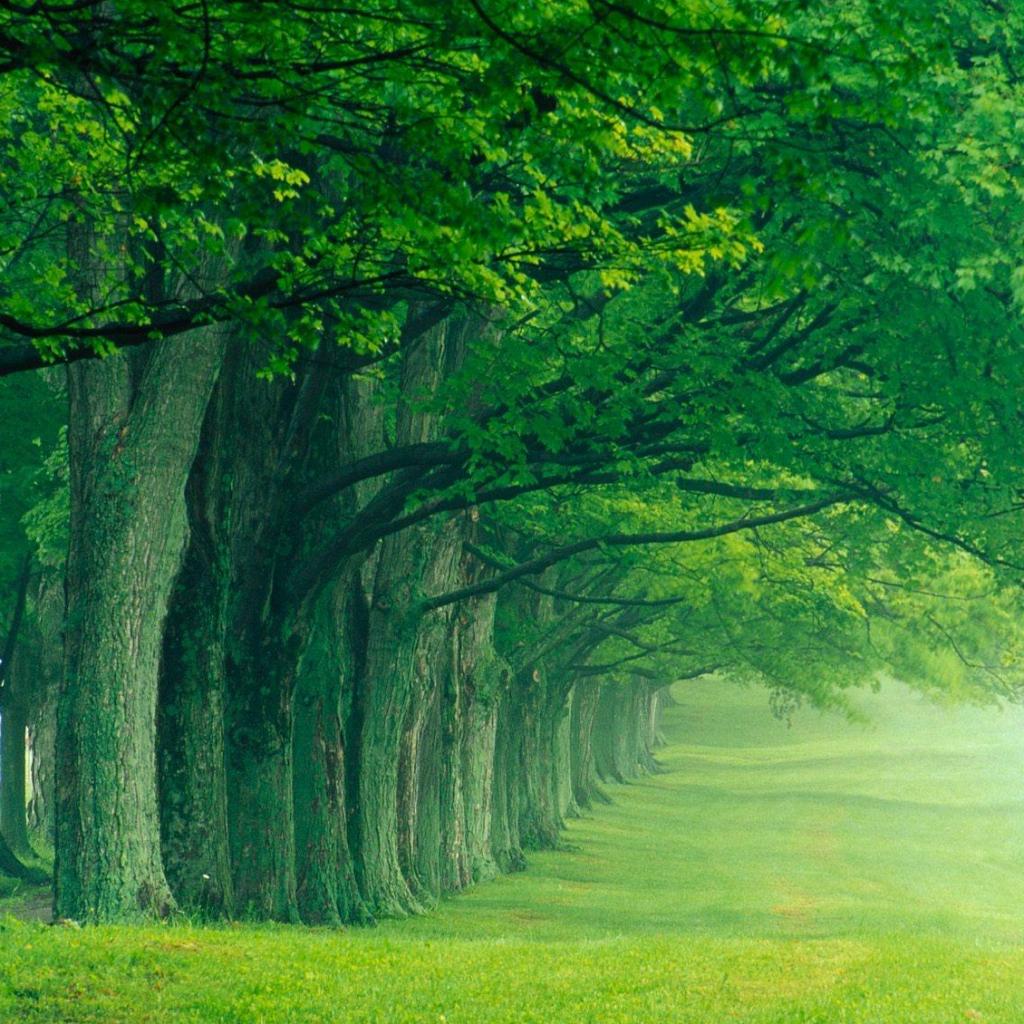
A healthy tree has strong, flexible branches, evenly colored leaves, and bark that’s intact without deep splits or holes. During the growing season, the canopy should appear full and balanced, with consistent leaf size throughout. In Middletown’s varied soils—from sandy bayshore plots to heavier clay inland—species like white oak, black cherry, and tulip poplar show resilience, but they still rely on consistent hydration and oxygen flow in the root zone.
Take time to observe your trees through each season. In spring, watch for even budding and leaf growth. By late summer, the foliage should stay green and vibrant, not dull or spotted. Bark should resist easy peeling, and branches should not sag or snap under moderate weight.
When a tree’s appearance or behavior changes from its normal pattern, that’s often your first clue something is wrong.
Common Visual Warning Signs of Tree Stress
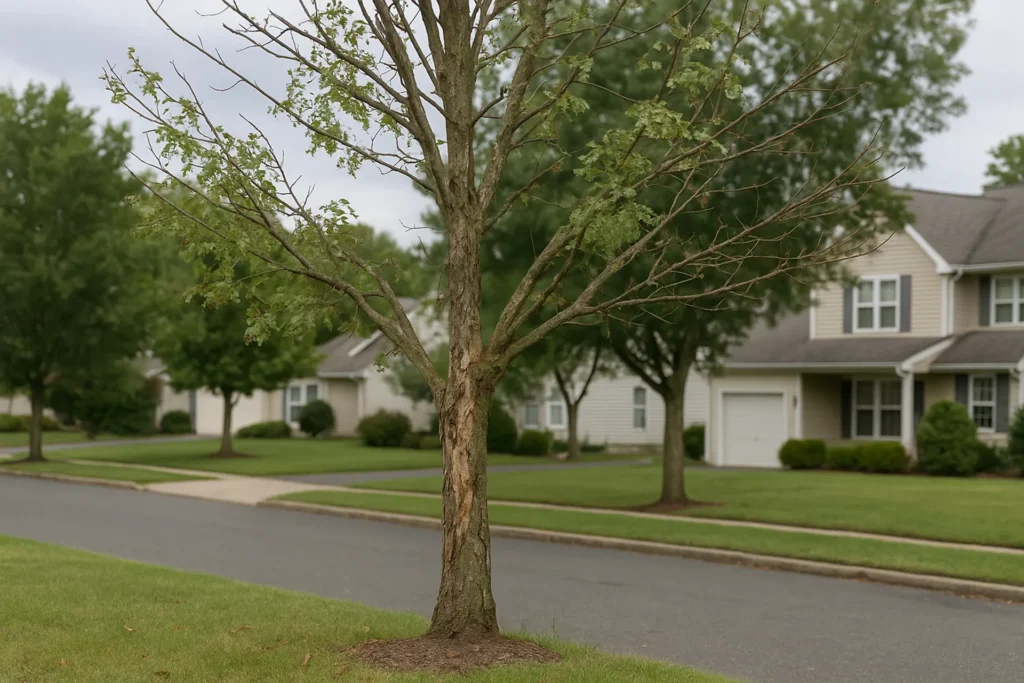
Most tree problems start small. By learning to recognize subtle visual cues, you can intervene before the issue spreads or causes structural weakness.
Here are a few key indicators that a tree in your Middletown yard might be struggling:
Discolored or curling leaves – Yellowing or browning leaves outside the fall season may indicate root damage, nutrient deficiency, or disease such as anthracnose.
Sparse canopy – Uneven growth or bare patches near the crown can suggest dieback, borers, or girdling roots.
Fungal growth – Mushrooms or bracket fungi at the base of the trunk often mean internal decay.
Cracks in bark or splitting limbs – These structural weaknesses can lead to major limb failure, especially in storms.
Leaning trunk – A lean that suddenly worsens may point to root instability or saturated soil conditions.
Regular observation is key. Many of these symptoms overlap, so identifying them early allows time for proper diagnosis and treatment.
Middletown's #1 Tree Expert Company
FREE Inspection & Estimate | Certified Arborists | Trimming, Pruning, Removal, More!
Sponsored
The Role of Soil, Drainage, and Local Conditions
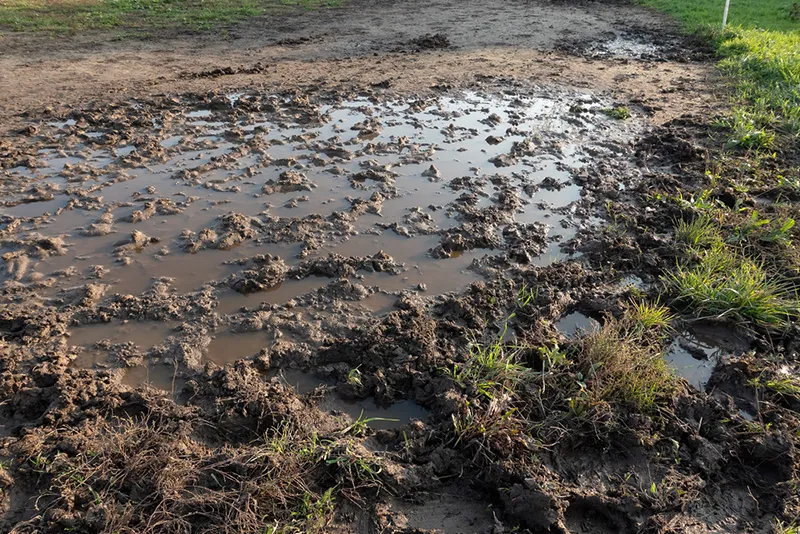
Middletown Township’s terrain stretches from coastal lowlands near Belford to higher, wooded areas by Lincroft. That variation means soil types and drainage can differ greatly even within the same neighborhood.
In wetter areas, heavy storms can compact soil or wash away nutrients, limiting root oxygen. On higher, drier lots, trees may suffer drought stress in late summer. Salt spray from winter road treatments or ocean winds can also affect leaf health in neighborhoods like Port Monmouth or Leonardo.
When you notice recurring issues—such as wilting despite watering—it’s worth testing your soil composition and pH. Many homeowners are surprised to learn their tree’s problems stem from compacted ground or improper grading rather than pests or disease. Addressing those factors early can prevent future decline.
Storm Damage: The Hidden Aftermath

Strong winds and heavy rains are nothing new to Monmouth County. But after every major storm, local arborists see a surge in calls about cracked branches, uprooted trunks, and hanging limbs. Even if a tree appears to have “survived” the weather, internal stress fractures may have formed.
A post-storm inspection should always include:
Checking the upper canopy for broken limbs hung up in other branches (often called “widowmakers”).
Looking at the trunk base for soil heaving or exposed roots.
Examining bark wounds where limbs tore away.
Watching for oozing sap or sawdust, which can signal boring insects entering through fresh cracks.
If you’re unsure about stability, it’s safer to consult a professional than to attempt pruning yourself. Damaged trees can be unpredictable under tension, and hidden weaknesses may cause sudden collapse.
Insect and Disease Concerns in Middletown

While New Jersey doesn’t face the same severe tree infestations as some western states, several pests and pathogens are common in this region. Homeowners often encounter:
Spotted lanternfly: a highly visible pest that feeds on sap and weakens trees.
Emerald ash borer: responsible for killing thousands of ash trees across the state.
Bagworms and tent caterpillars: which defoliate branches quickly in early summer.
Powdery mildew and leaf spot fungi: especially on dogwoods and maples in humid conditions.
Treatment varies depending on species, size, and infestation level. In most cases, early identification makes management far easier. If you notice unusual spotting, sticky residue, or insect clusters, take photos and compare them with reliable NJ Department of Agriculture pest guides—or have a professional verify the cause before applying treatments.
Middletown's #1 Tree Expert Company
FREE Inspection & Estimate | Certified Arborists | Trimming, Pruning, Removal, More!
Sponsored
Why Homeowners Should Avoid Aggressive DIY Pruning
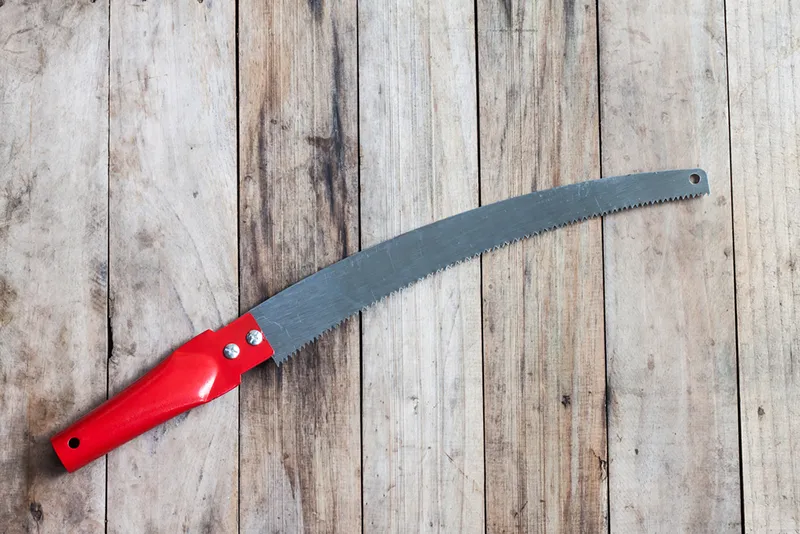
It’s tempting to grab a chainsaw and trim a few branches that seem overgrown or messy. However, improper cuts can permanently damage a tree’s structure or expose it to disease. Cutting too close to the trunk, removing large limbs during active growth, or topping trees to control height are all mistakes that weaken long-term health.
Pruning is both science and art. Proper timing and technique depend on the species, season, and desired shape. Oaks, for example, should never be pruned in mid-summer due to oak wilt risk. Maples may “bleed” excessively if trimmed too early in spring.
A professional arborist uses the right angles and tools to promote natural healing and balanced regrowth—something difficult to replicate without training. For tall trees near power lines or rooftops, homeowners should never attempt trimming at all.
When Roots Cause Problems Above and Below Ground
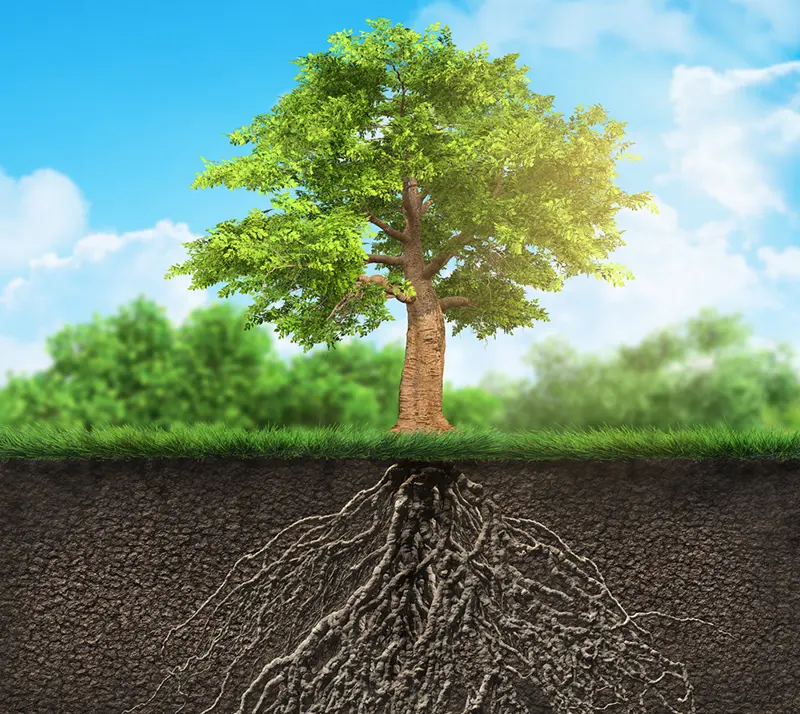
Tree roots are often misunderstood. They spread wide, not deep—typically extending two to three times the canopy width. In compact suburban spaces like those found around Middletown’s older neighborhoods, this can cause competition with driveways, sidewalks, and foundations.
Visible surface roots are not always a problem, but they can signal shallow soil or restricted space. Cutting or covering them can stress the tree or increase the risk of toppling during storms. Below ground, girdling roots that wrap around the trunk base can slowly choke water and nutrient flow, leading to canopy dieback.
Solutions range from selective root pruning to regrading soil or installing root barriers for future plantings. Because underground systems are delicate, root work is best left to professionals who can assess both safety and preservation.
Seasonal Checks: The Homeowner’s Year-Round Routine
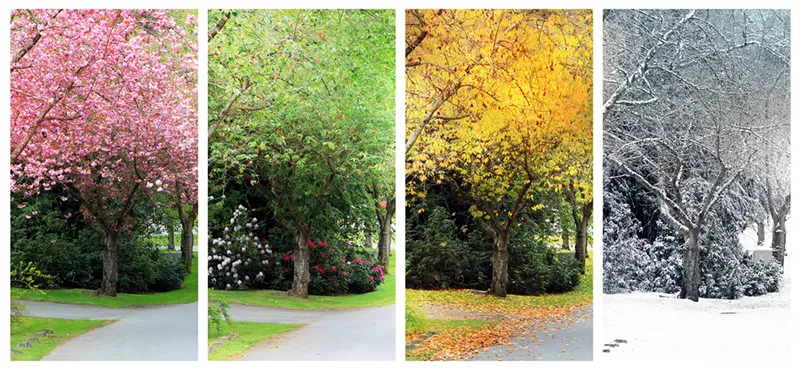
Preventive care is the best way to keep Middletown’s trees healthy. A simple seasonal inspection schedule can help catch small issues early:
Spring: Look for new buds, even leafing, and inspect for insect eggs or fungal patches.
Summer: Watch for wilting, drought stress, and damage from storms or lawn equipment.
Fall: Check for dead branches and remove weak limbs before winter ice accumulation.
Winter: Observe structure without leaves; notice cracks, leaning, or root flare changes.
Keeping photos from season to season is a helpful way to track subtle changes and identify patterns over time.
Middletown's #1 Tree Expert Company
FREE Inspection & Estimate | Certified Arborists | Trimming, Pruning, Removal, More!
Sponsored
The Value of Early Professional Evaluation

Homeowners often wait until a problem becomes serious to seek help, but early consultation usually saves both money and trees. A certified arborist can diagnose nutrient imbalances, pest infestations, and structural concerns before they escalate.
Even a single on-site evaluation can offer insight into which trees may need attention, how to improve soil conditions, or what preventive trimming could reduce future storm damage. Middletown’s mix of mature landscapes and coastal weather makes proactive management especially worthwhile.
Your trees are more than just part of your landscape—they’re a living investment that grows in value with proper care. By recognizing signs of trouble early and understanding the environmental factors unique to Middletown Township, you can make informed choices that protect your property and preserve the natural beauty of your neighborhood.
Healthy, well-maintained trees enhance every home. Whether you’re caring for a single backyard maple or a row of oaks along your driveway, attentive observation and timely action can make the difference between a thriving landscape and one headed for decline.
